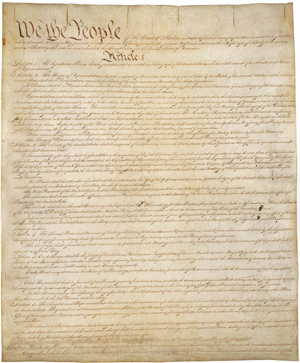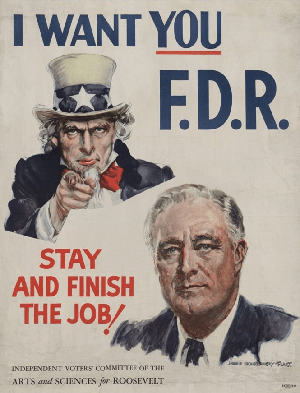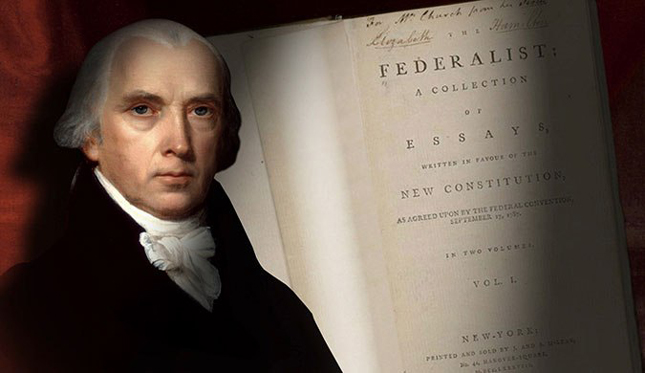| Formation of Governments
The government of each nation has unique characteristics
that relate to that nation’s historic development. To carry out their
functions, governments have been organized in a variety of ways.
Most large countries have several different levels of government.
These usually include a central or national government, as well as the
governments of smaller divisions within the country, such as provinces,
states, counties, cities, towns, and villages.
Government Systems
The relationship among the national government and the
smaller divisions can be described as either unitary or federal.
Unitary System
A unitary system of government gives all key powers
to the national or central government. This does not mean that only
one level of government exists. Rather, it means that the central
government creates state, provincial, or other local governments and gives
them limited sovereignty. Great Britain, Italy, and France developed
unitary governments as these nations gradually emerged from smaller kingdoms.
Federal System
A federal system of government divides the powers
of government between the national government and state or provincial governments.
Each level of government has sovereignty in some areas. The United
States developed a federal system after the thirteen colonies became states.
To begin with, the United States formed a confederacy,
a loose union of independent states. When the confederacy failed
to provide an effective national government, the Constitution made the
national government supreme, while preserving some state government powers.
Today, other countries with federal systems include Canada, Switzerland,
Mexico, Australia, and India.
What is the difference between
a unitary system and a federal system?
Constitutions and Government
| A constitution is a plan that provides the rules
for government. A constitution serves several major purposes.
(l) It sets out ideals that the people bound by the constitution believe
in and share. (2) It establishes the basic structure of government
and defines the government’s powers and duties. (3) It provides the
supreme law for the country. Constitutions provide rules that shape
the actions of government and politics, much as the rules of basketball
define the action in a basketball game.
Constitutions may be written or unwritten; however, in
most modern states, constitutions are written. The United States
Constitution, drawn up in 1787, is the oldest written constitution still
serving a nation today. |
|
 |
Other nations with written constitutions include France,
Kenya, India, Italy, and Switzerland. Great Britain, on the other
hand, has an unwritten constitution based on hundreds of years of legislative
acts, court decisions, and customs.
All governments have a constitution in the sense that
they have some plan for organizing and operating the government.
In this sense the People’s Republic of China has a constitution.
The term constitutional government, however, has a special meaning.
It refers to a government in which a constitution has authority to place
clearly recognized limits on the powers of those who govern. Thus,
constitutional government is limited government. Despite the existence
of a written constitution, the People’s Republic of China does not have
constitutional government. In that country, there are few limits
on the power of the government.
Incomplete Guides
| Constitutions themselves are important but incomplete
guides to how a country is actually governed. They are incomplete
for two reasons. First, no written constitution by itself can possibly
spell out all the laws, customs, and ideas that grow up around the document
itself. In the United States, for example, until Franklin D.
Roosevelt was elected president four times, it was custom, rather than
law, that no person should be elected president more than twice.
Only when the Twenty-second Amendment went into effect
was a president limited by law to two elected terms. |
|
 |
Second, a constitution does not always reflect the actual
practice of government in a country. The People’s Republic of China,
for example, has a written constitution filled with statements about the
basic rights, freedoms, and duties of citizens. Yet, for years the
Chinese government has maintained an extensive police force to spy on Chinese
citizens and punish those whose ideas are not acceptable to the state.
Although the government relaxed some restrictions in the late 1980s,
authorities crushed a pro-democracy movement in 1989.
A Statement of Goals
Most constitutions contain a statement that sets forth
the goals and purposes to be served by the government. This statement
is usually called the preamble. The Preamble to the United
States Constitution states the major goals of American government:
“We, the people of the United States, in Order
to form a more perfect Union, establish Justice, insure domestic Tranquility,
provide for the common defence [defense], promote the general Welfare,
and secure the Blessings of Liberty to ourselves and our Posterity, do
ordain and establish this Constitution for the United States of America.”
—Preamble to the Constitution, 1787
A Framework for Government
The main body of a constitution sets out the plan for
government. In federal states, such as the United States, the constitution
also describes the relationship between the national government and state
governments. Most written constitutions also describe the procedure
for amending, or changing, the constitution.
The main body of a constitution is usually divided into
parts called articles and sections. The United States Constitution
has 7 articles containing a total of 21 sections. The French constitution
has 92 articles grouped under 15 titles. The Indian constitution,
the longest in the world, consists of hundreds of articles.
The Highest Law
Constitutions provide the supreme law for states.
A constitution is usually accepted as a superior, morally binding force.
It draws its authority from the people or from a special assembly chosen
by the people to create the constitution. Constitutional law
involves the interpretation and application of the constitution.
Thus, constitutional law primarily concerns defining the extent and limits
of government power and the rights of citizens.
What is a constitutional government?
Politics and Government
The effort to control or influence the conduct and policies
of government is called politics. The Constitution did not
prevent the development of politics because politics and government are
closely related. In fact, a major political struggle developed over
the ratification of the Constitution itself. Within a few years major
political parties played key roles in elections.
People are taking part in politics when they join a citizens’
group protesting higher taxes or when they meet with the mayor to ask the
city to repave the streets in their neighborhood. Legislators are
acting politically when they vote to have government buildings constructed
in the districts they represent.
Seeking Government Benefits
Participation in politics arises because people realize
that government has the potential to influence their lives in many ways.
Different people make different demands on government. Construction
workers may want government to support the building of new highways to
create jobs. Conservationists may want the government to spend its
money on mass transit and public parks instead. Still other people,
who favor lower taxes, may want neither the new highways nor more public
parks.
In a large, diverse nation like the United States, there
is a continual struggle over what benefits and services government should
provide, how much they should cost, and who should pay for them.
Through politics, individuals and groups seek to maximize the benefits
they get from government while they try to reduce the costs of these benefits.
Through politics, people also seek to use government to turn their values
and beliefs into public policy. One group, for example, tries to
influence government to ban smoking in public places. Other people
pressure government not to restrict smoking in any way.
Importance of Politics
Through politics, conflicts in society are managed.
As people seek rewards and benefits, politics provides a peaceful way for
them to compete with one another. The outcomes of politics—the struggle
to control government—affect such key matters as the quality of air and
water, economic conditions, peace and war, and the extent of citizens’
rights and freedoms.
Special Interests
The Constitution says that government should promote the
general welfare. The Framers believed government should operate in
the interests of all the people, not favoring any special group or person.
One of the issues that concerned the Framers of the United States Constitution
was the possibility that groups of people, united by special political
interests, would hinder the launching of the new government. James
Madison explained his concerns in a series of articles called The
Federalist:
“Among the numerous advantages promised by
a well-constructed Union... [is] its tendency to break and control the
violence of faction. ... By a faction, I understand a number of citizens
... who are united and actuated [moved] by some common impulse of passion,
or of interest, adverse to the rights of other citizens, or to the permanent
and aggregate interests of the community....”
—James Madison, 1787

Some people equate politics with bribery or corruption.
They believe the general welfare may be sacrificed to the desires of a
special-interest group. The misuse of politics, however, should not
obscure the value of a political system.
What is politics?
Governing in a Complex World
The United States government conducts policy in a complex
world. Changing relationships challenge the policies of every nation.
It is not easy to define the boundaries of government.
Major Inequalities Among States
Because of great inequalities among countries, the world
today is full of contrasts. The United States and about 20 other
states, such as Japan, Canada, Australia, and France, are industrialized
nations. Industrialized nations have generally large industries
and advanced technology that provide a more comfortable way of life than
developing nations do. Developing nations are only beginning
to develop industrially. More than 100 developing nations have average
per capita, or per person, incomes that are a fraction of those of industrialized
nations. In the poorest countries, starvation, disease, and political
turmoil are a way of life.
Many states of Africa south of the Sahara and of Southeast
Asia are developing nations. Between these two levels of nations
are many newly industrialized states like Mexico, South Korea, and Argentina,
as well as other states in South America, Eastern Europe, and the Middle
East.
Growing Interdependence
Although each state is sovereign, it must exist in a world
of many nations. Nations today are in constant contact with one another,
and they are becoming more and more interdependent.
Interdependence means that nations must interact or depend
on one another, especially economically and politically. The larger
countries of North America—Canada, Mexico, and the United States—are developing
greater economic, social, and political ties. In 1993 the United
States signed the North American Free Trade Agreement (NAFTA) that linked
North America in a far-reaching trade partnership that affected goods produced
and sold between the United States, Canada, and Mexico.
Interdependence affects the developing states. Many
of the developing states have become very dependent on the industrialized
ones for economic aid, medical supplies and services, financial investment,
assistance to cope with natural disasters, and military aid.
Growing interdependence means that events in one nation
affect events throughout the world. In 1990, for example, President
Bush sent troops to Saudi Arabia after Iraq invaded neighboring Kuwait.
The United States relied on the Middle Eastern states for an important
part of its oil supply. As war threatened to break out in the region,
people feared that there would be an oil shortage in the United States.
The United States and its allies defeated Iraq in the Persian Gulf War
in 1991; however, tensions in the Gulf have continued. In 1996 the
United States launched 27 missile attacks against Iraq because the policies
of its president, Saddam Hussein, had threatened oil-producing countries
again. In 1997 new tensions arose when Iraq refused to comply with
the terms of the United Nations cease-fire agreement.
Travel, trade, and communications among states are increasing.
In 1970 United States exports of goods and services were more than $62
billion, while imports were nearly $60 billion. By 2000 United States
yearly exports climbed to more than $950 billion, and imports passed the
one trillion mark. An increase in international communications more
than matched this huge increase in trade. Fiber optic telephone cable
enabled Americans to exceed a tenfold increase in overseas telephone contacts
between 1977 and the early 1990s. Satellite television has connected
people of every continent.
Nonstate International Groups
Today’s world also contains some groups that are not states
but that play an important role in international politics. These
nonstate groups fall into three categories: (1) political movements such
as national liberation organizations; (2) multinational corporations; and
(3) international organizations. Nonstate groups play major roles
in international affairs because they impact policies and decisions of
the diverse states of the world.
Some national liberation organizations, such as the Palestine
Liberation Organization (PLO), maintain diplomatic relations with many
states. States may refuse to recognize those that conduct terrorist
activities, however.
Multinational corporations are huge companies with offices
and factories in many countries. While they do not have political
sovereignty, they do carry out their activities on a global scale, selling
their products worldwide and entering into
agreements with foreign governments. Thus, multinational
corporations influence international politics and the internal decisions
of their host countries. Richard Holder, president of Reynolds Metals
Company, explained that a global company is one that
“... operates as a worldwide, integrated
system in which all operations, wherever they may be, are interdependent
in terms of operations and strategies. Every decision ... is considered
in the light of a worldwide system.”
—Richard Holder, October 1989
General Motors, American Telephone and Telegraph,
Unilever, Nabisco, British Petroleum, Royal Dutch Shell, Mitsubishi, and
Sony are examples of global corporations that have attained worldwide economic
importance.
Finally, the modern world includes many international
organizations. These groups range from the United Nations (UN) to
more specialized organizations such as the International Sugar Council
and the Universal Postal Union. These organizations undertake a wide
variety of tasks, often to serve the needs of member states. The
World Meteorological Organization, for example, facilitates the exchange
of weather information among states.
What is the role of government
in our complex world? |



